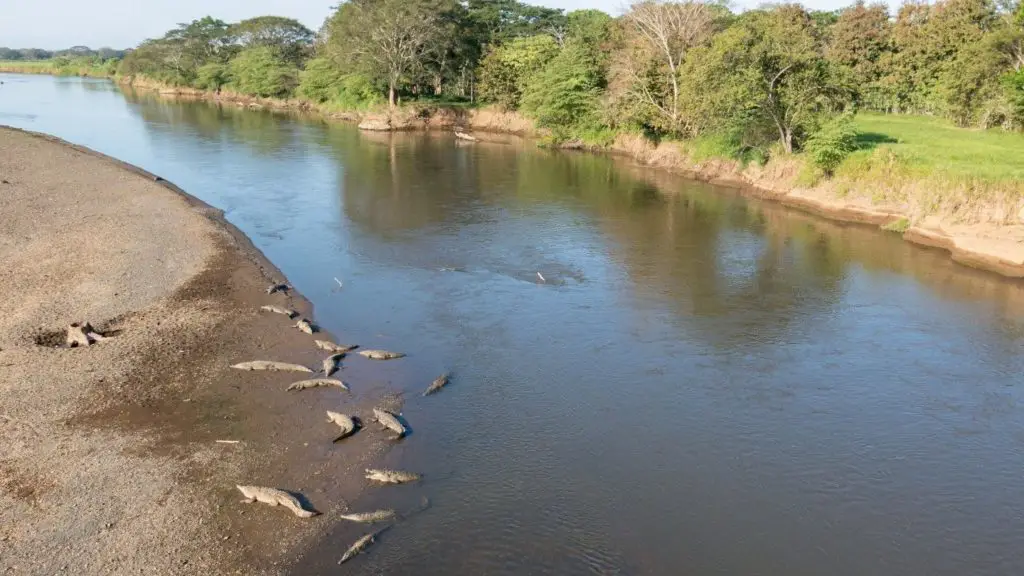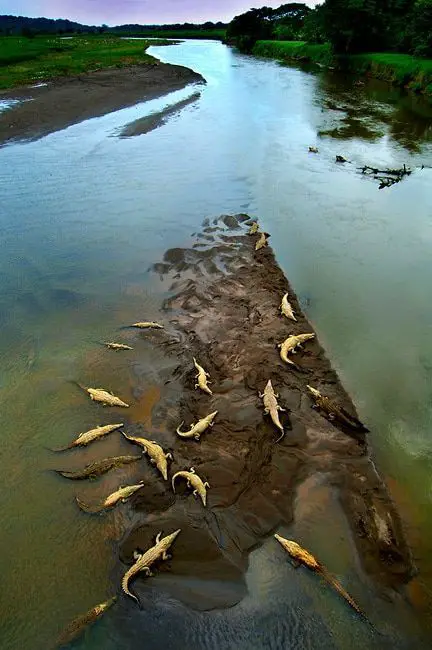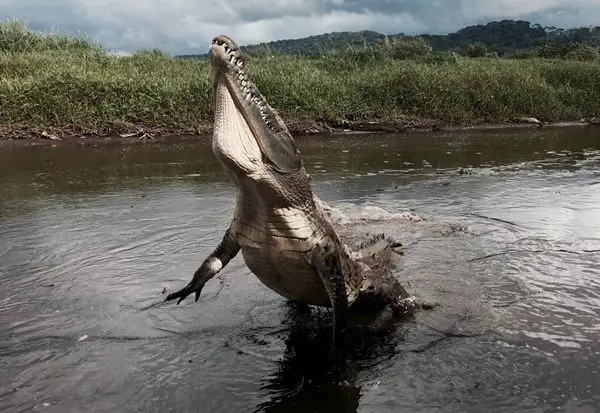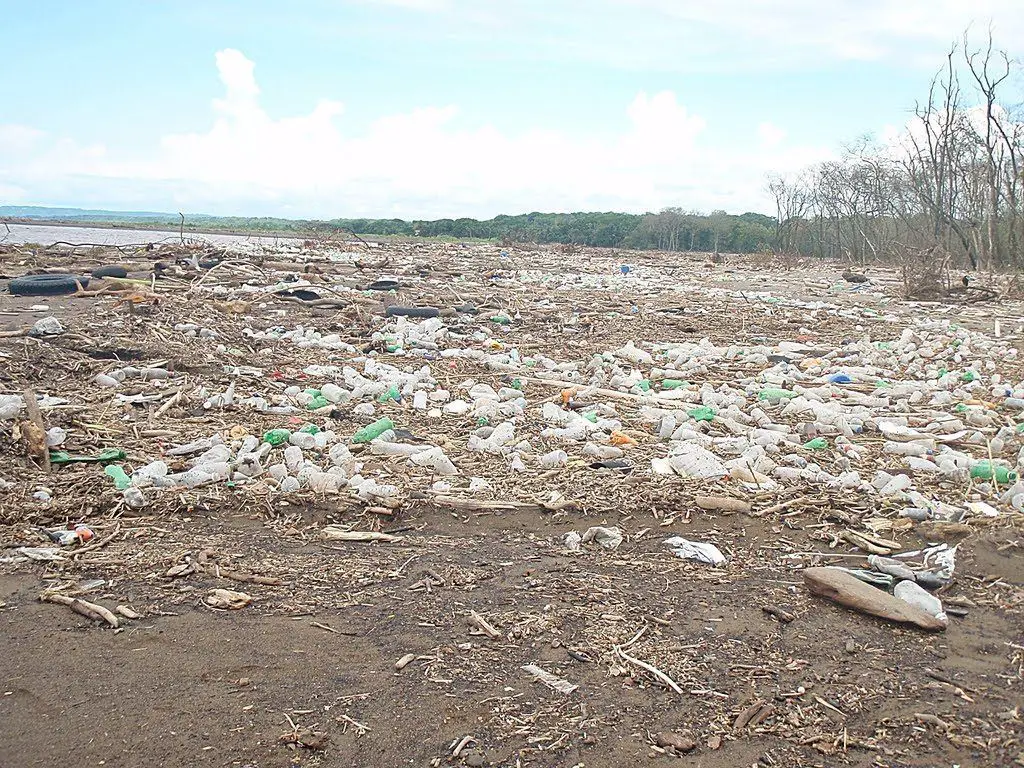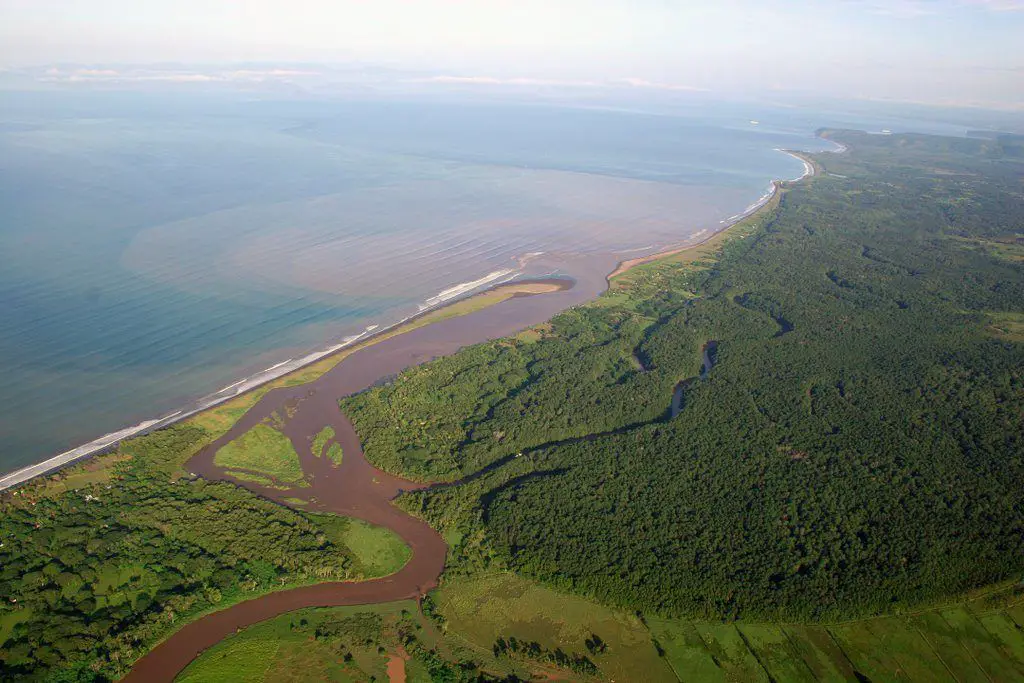The Tárcoles River, also known as the Grande de Tárcoles River, is located in the province of Puntarenas, Costa Rica, and flows through the Carara National Park.
Indice De Contenido
Location and map of the Tárcoles River
The Tárcoles River rises on the southern slopes of the central mountain range of the country and flows west and southwest for about 70 km before emptying into the Pacific Ocean at Pigres, in the Gulf of Nicoya.
The Tárcoles River has marshlands adjacent to the village that offer birdwatching, hiking trails and one of the highest waterfalls in the country.
It is about 111 km long and its watershed covers an area of 2,121 km², including much of the Greater Metropolitan Area, where about 50% of the population lives.
It is known for its abundance of American crocodiles. The Tárcoles River is one of the largest in the country, but unfortunately the most polluted in Central America.
However, together with its Costa Rican siblings, the Frio and Pacuare rivers, it boasts natural beauty such as the Guacalillo mangrove swamp at its mouth, a natural treasure not yet exploited by tourism, whose tranquil channels are home to four of the five species of mangrove found in Costa Rica, the black, red, white and piñuela mangroves, as well as the rich flora and fauna of the region.
The Tárcoles River is formed by the confluence of the Virilla and Grande de San Ramón Rivers, with an area of more than 2,000 square kilometres, and its main tributaries are the Cucer, Carrara and Tumbales Rivers.
Almost its entire course lies on the border between the provinces of Alajuela and San José and is used to irrigate sugar cane, coffee, bananas and cattle.
The rivers of the Gran Tárcoles basin were the first in Costa Rica to be used for the construction of hydroelectric dams (see Caroní River), such as La Garita on the Río Grande Poás, Electriona and Belén on the Virilla.
Crocodiles of the Tárcoles River
The banks of the Tárcoles River are home to a wide variety of animals including ducks, egrets, tiger herons, dara herons, mangrove canaries, parrots and dwarf kingfishers, as well as caimans, cherepos, giant iguanas and macaws, to name but a few.
But its most unique feature is the abundance of American crocodiles, or Crocodylus acutus, which live in its waters and on its slopes. The Tárcoles has one of the largest crocodile populations in the world, with around 25 crocodiles (see Niger River) per square kilometre.
These animals play an important role in aquatic ecosystems, are a valuable economic resource, a major tourist attraction and are of scientific interest as the only survivors of the Archosaurus group.
The large reptiles can be seen swimming in the river or sunbathing on the sand or sediment banks. It is currently very popular with both national and foreign tourists due to the large number of crocodiles and lizards that inhabit it and can be seen along the river banks.
Pollution of the Tárcoles River
The Tárcoles River is one of the most polluted rivers in Costa Rica because it receives all the water from the metropolitan area, along with sewage from the sewer system and much of the drainage from the cities of the Central Valley.
A large amount of organic material, estimated at around 67%, along with untreated industrial waste, is discharged into the Tárcoles River. In addition, there are occasional spills of crude oil into its waters and a lack of awareness among the population and the country’s industrial sector.
Pollutants from agricultural areas, factories, sewage, uncontrolled dumping and lack of maintenance (see Neverí River) are just some of the main factors aggravating the pollution situation of the Tárcoles River, so close to the inhabitants and visitors of the capital, San José.
This is a serious problem not only for the Tárcoles River and its surroundings, but for Costa Rica’s entire ecological environment, in contrast to the country’s great environmental strengths in other regions.
Costa Rica is known as a country that takes care of its natural resources, making them part of its image, its historical development and a rich and powerful source of national and international tourism.
Although national private companies and international organisations have helped the state and the Costa Rican people to save the waters of the Tárcoles River, more campaigning and commitment is needed to solve the problem.

